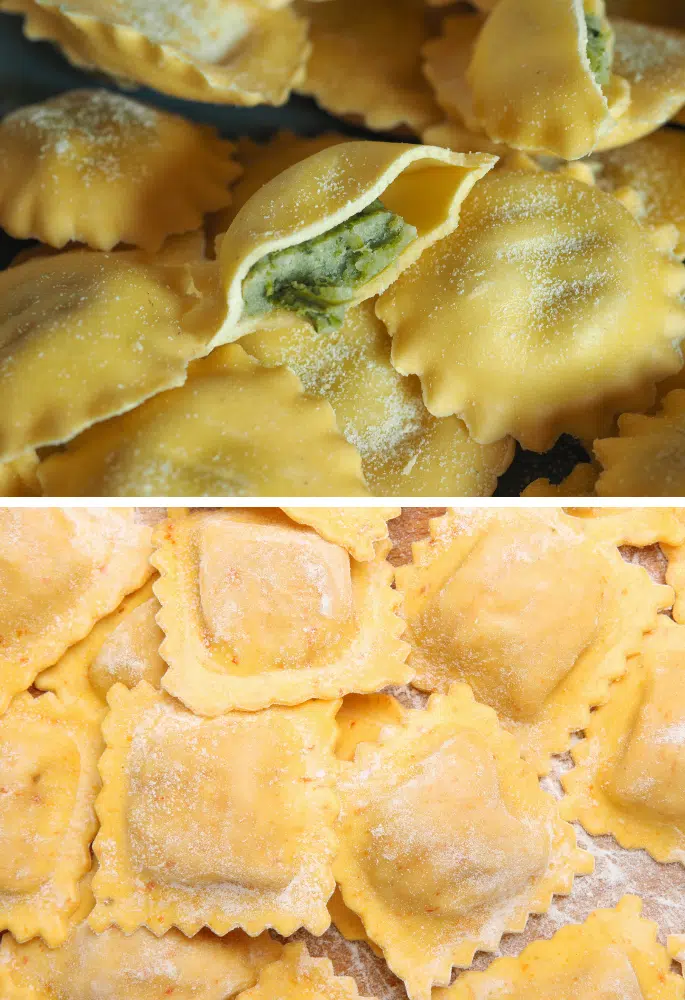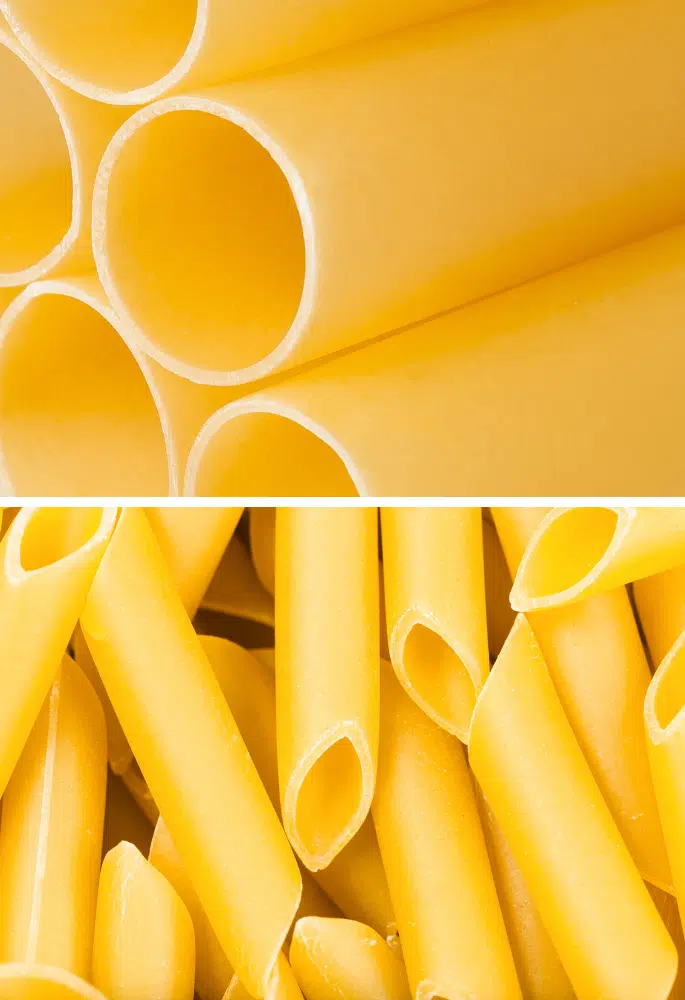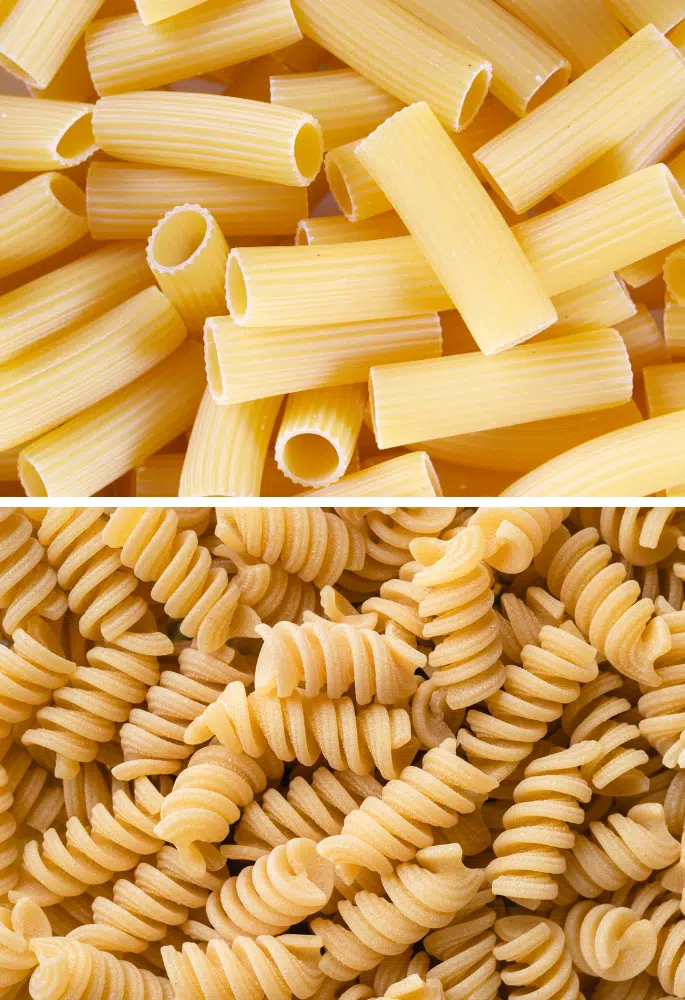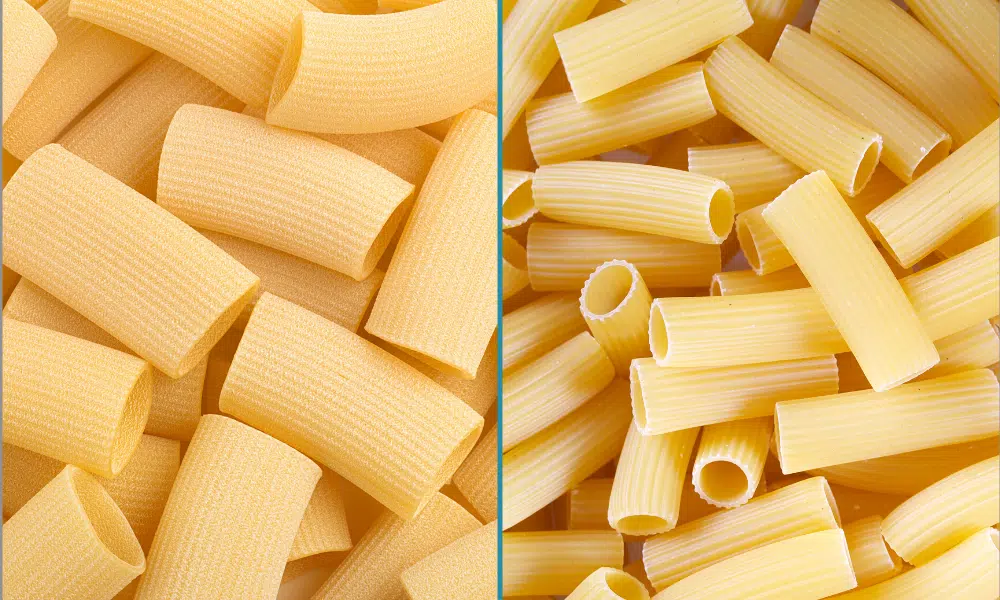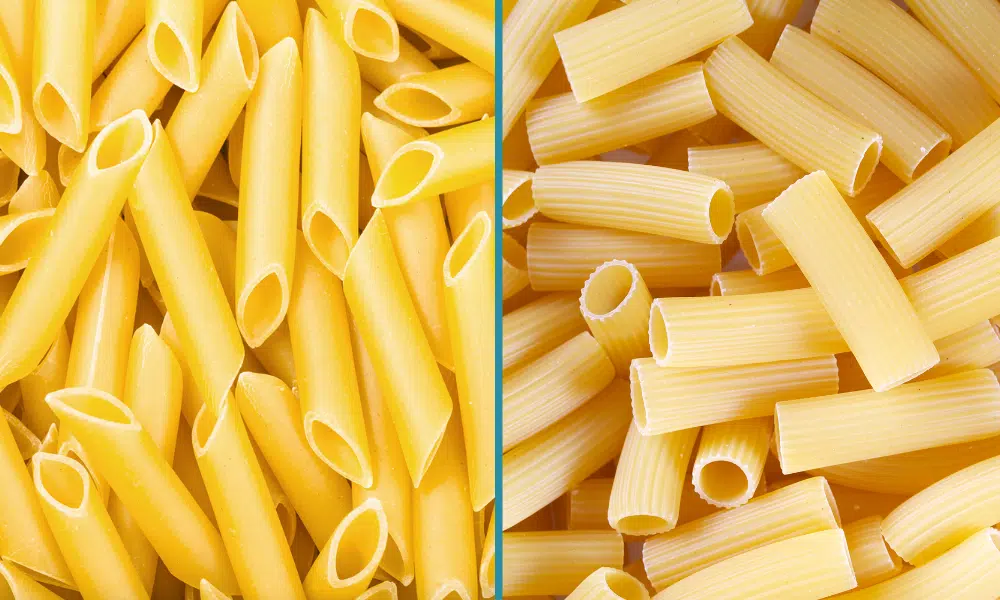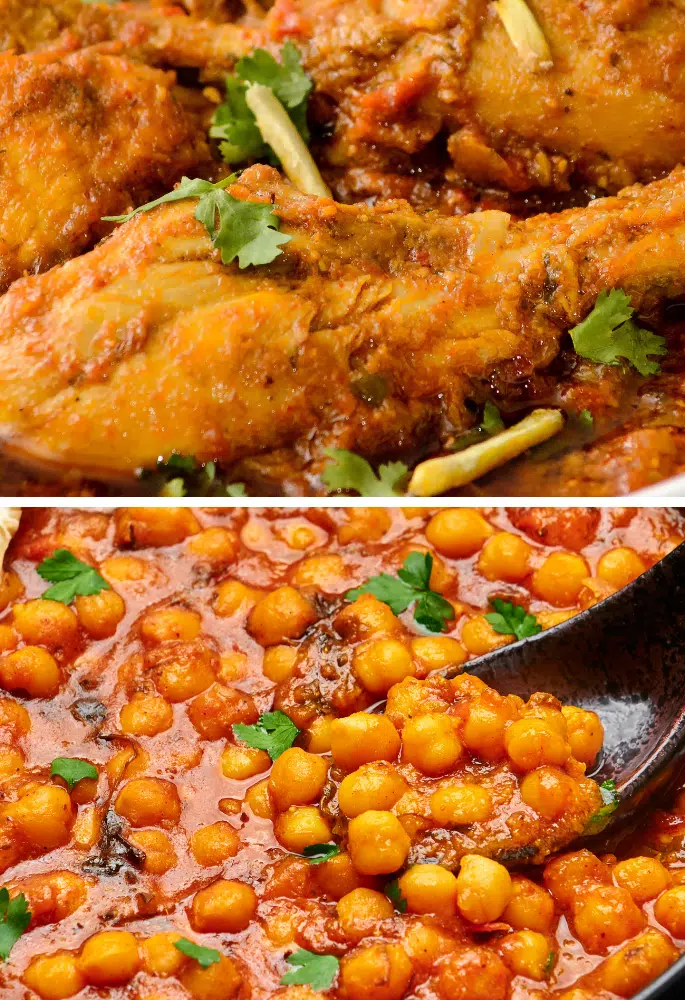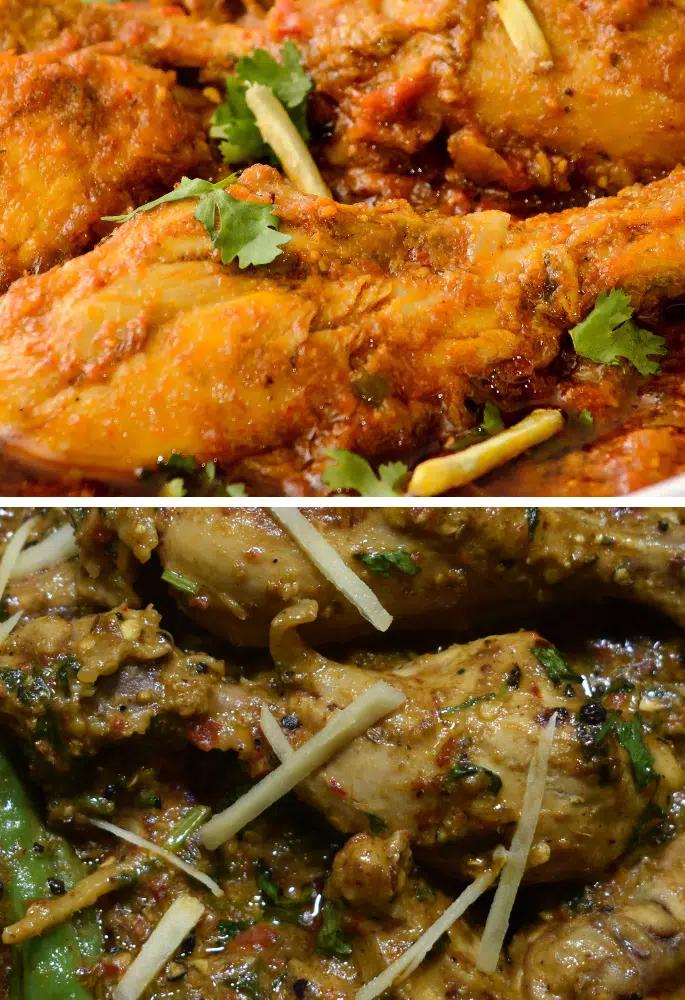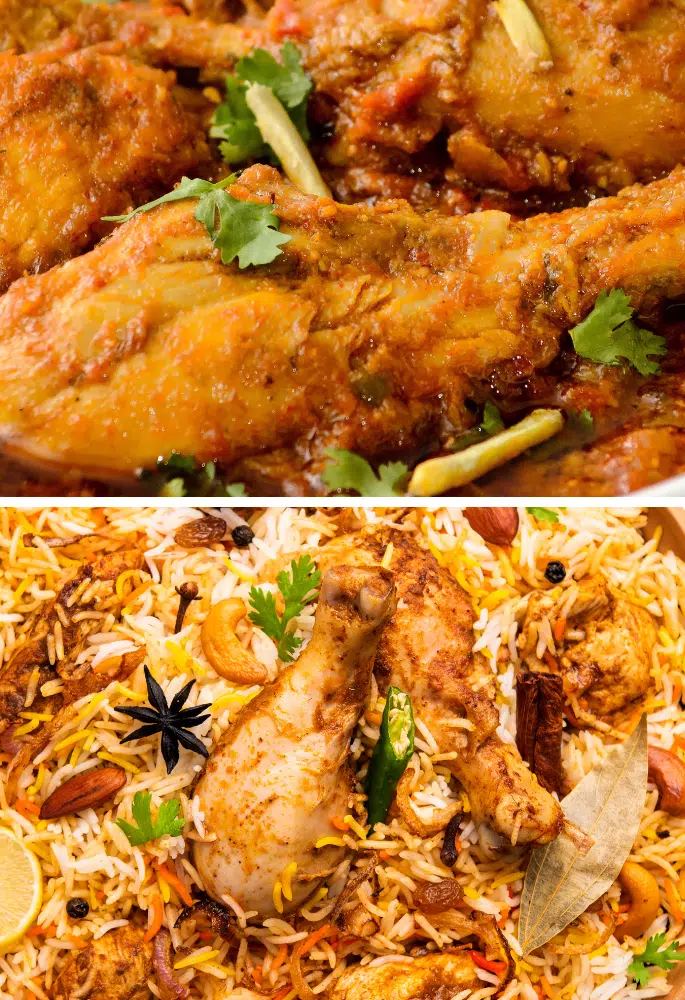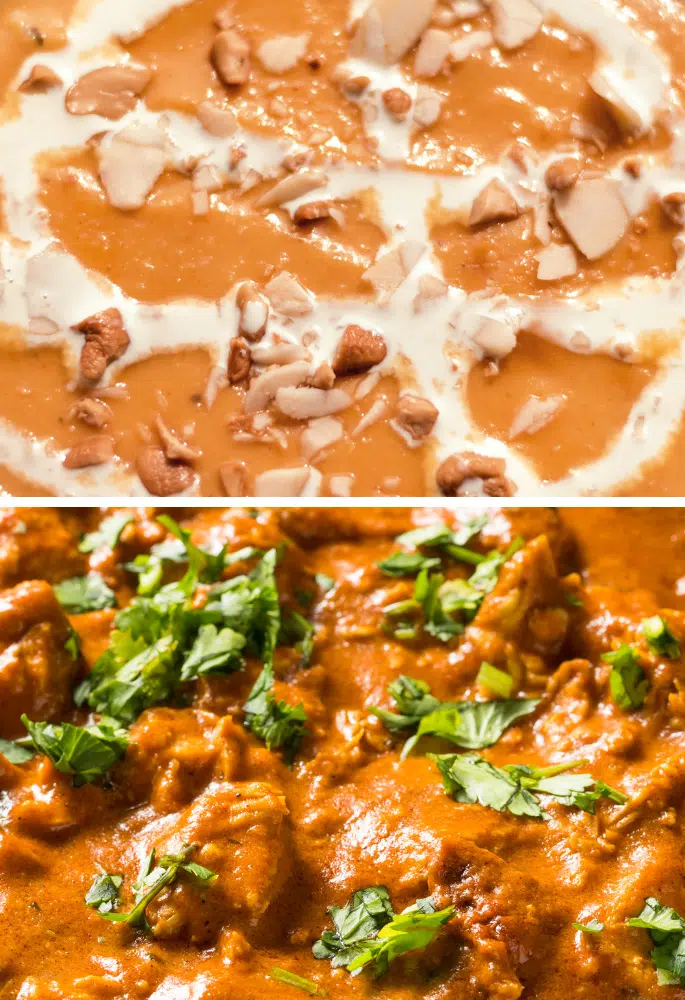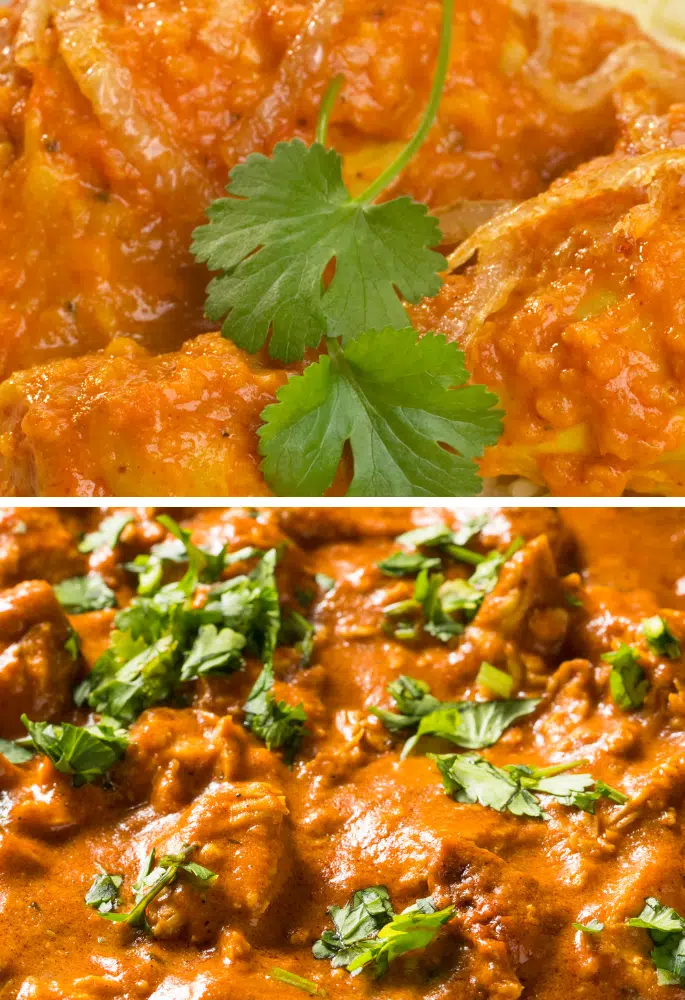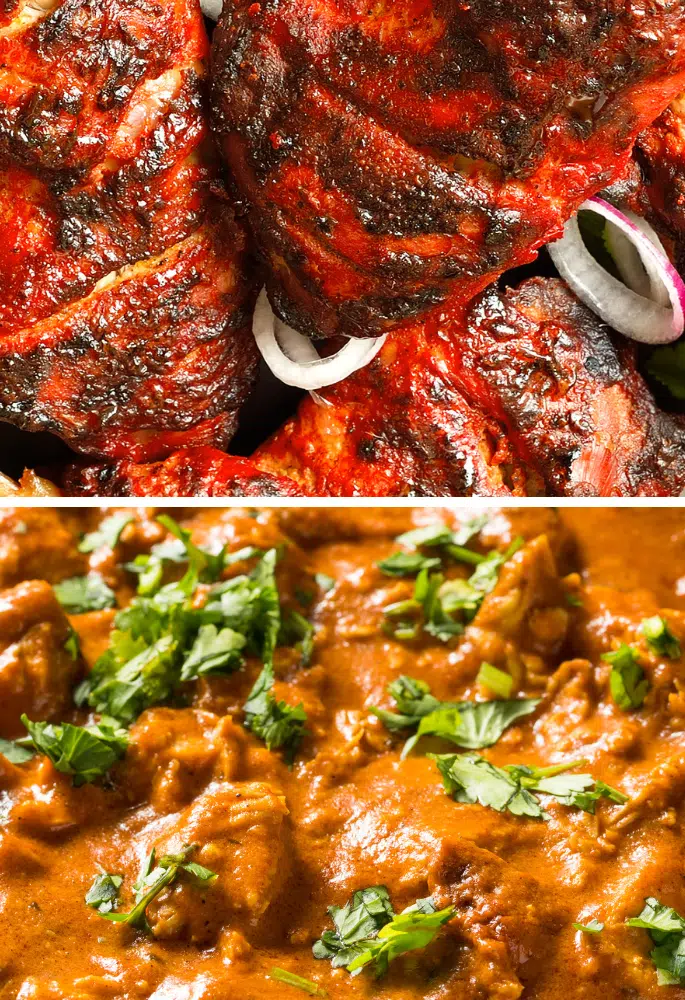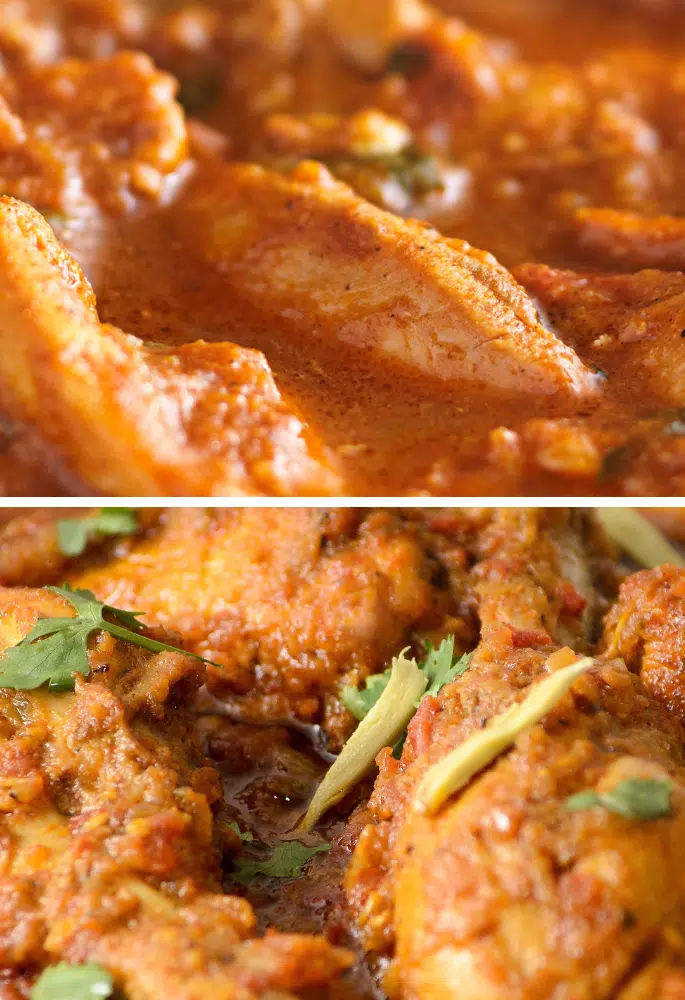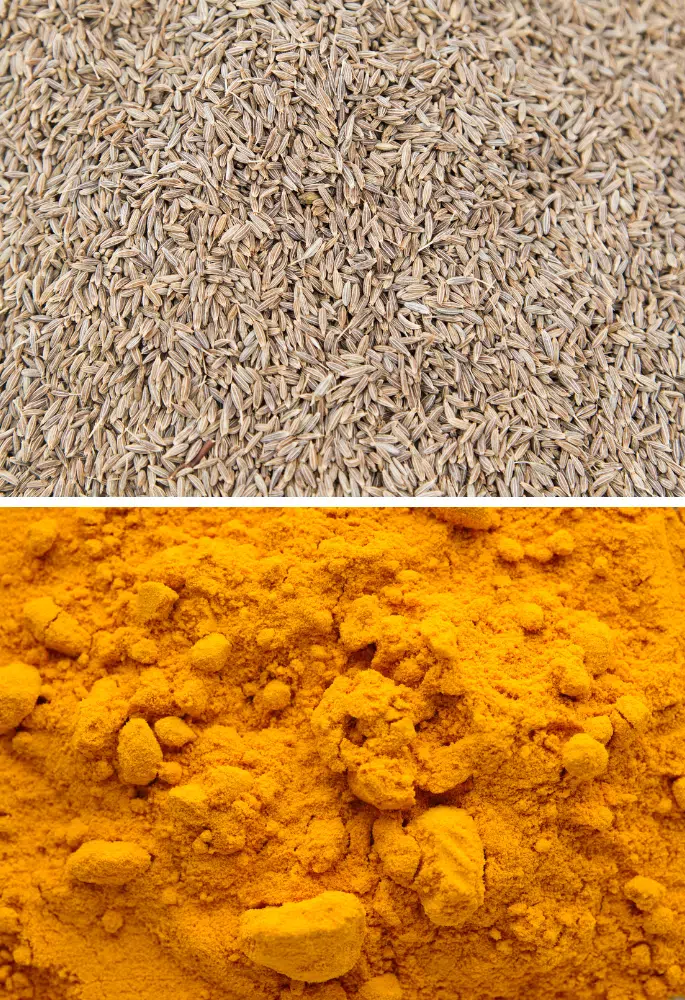Italian is the cuisine with by far the most variety of pasta dishes. These dishes vary in flavour and the type of pasta used.
Two popular pasta dishes that are enjoyed both in and outside of Italy are cannelloni and manicotti, though few people actually know how these dishes are defined or how they are different. So, let’s explore two of Italy’s most loved pasta dishes.
Cannelloni and manicotti vary slightly in terms of typical filling but their biggest difference is the texture of the pasta tubes. Cannelloni features smooth pasta while manicotti uses ridged pasta tubes.
What is Cannelloni?
Deriving from the Italian word ‘canna’ meaning tube, cannelloni is a pasta dish that traditionally featured large pasta tubes that are stuffed with savoury fillings.
The dish is of Napel origin and uses a simple egg based dough to make the pasta as such a dough produces a sturdy enough pasta to hold your chosen fillings.
The filling for cannelloni can vary depending on personal preferences and regional variations.
Common fillings include ricotta cheese, spinach, ground meat (such as beef or veal), chicken, or a combination of ingredients. The filling is typically mixed with herbs and spices typical to Italian cuisine such as garlic, basil, oregano and red pepper flakes.
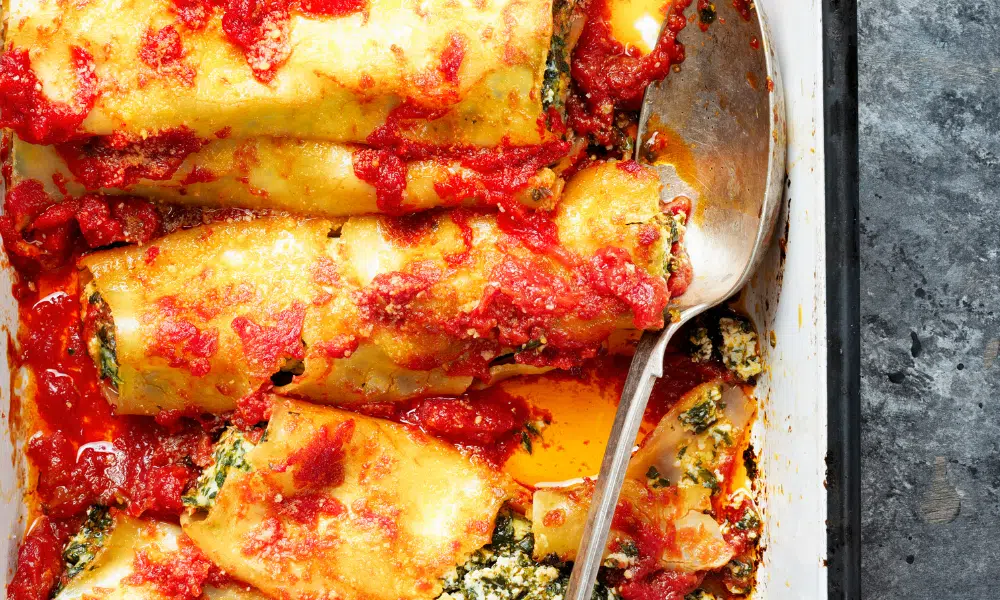
No one sauce is served with cannelloni as the appropriate sauce varies along with the choice of filling. That being said, a tomato or cheese sauce is the most often used.
How I Use Cannelloni
I fill cannelloni tubes with a mix of ricotta, spinach, and Parmesan. Then I layer them in a dish with marinara sauce and mozzarella on top. I bake this until golden and bubbling – a deliciously comforting meal!
What is Manicotti?
The origins of manicotti can be traced back to Sicily where the dish gained its name from the sleeve like pasta tubes, hence the name manicotti meaning sleeves.
Manicotti is characterised by large pasta tubes that are typically ridged around the outside. The tubes are large enough to be stuffed with a variety of savoury fillings while the exterior ridges act as the ideal vessel for a thick sauce.
Though you can use a whole range of fillings when making manicotti, it is traditionally quite a simple dish with the fillings primarily being a cheese and herb combination. These include shredded mozzarella and parsley or ricotta and basil.
Manicotti also needs to include a sauce. Like the pasta’s filling, there is a range of sauces that can be used in manicotti, but most use a tomato-based sauce as they are the sauces that can offer the most contrast and complement the cheese and herb filling.
The pasta is baked in the sauce and served as one.
How I Use Manicotti
I fill manicotti shells with a hearty mix of ground beef, garlic, and ricotta cheese. I place these in a dish with bechamel sauce and finish with a sprinkle of Parmesan cheese. It’s then baked until beautifully golden, creating a rich and meaty pasta dish!
Similarities Between Cannelloni and Manicotti
A lot of people tend to get Italian pasta dishes confused because of how many similarities they share. Cannelloni and manicotti are two of the most similar pasta dishes because of the following reasons:
Pasta Shape
Arguably the most defining part of cannelloni and manicotti is that they are stuffed pasta dishes.
As such, the dishes both feature hollow pasta tubes that are large enough to pack in plenty of filling and are designed to hold that filling in place.
Baked Dishes
The pasta tubes used for cannelloni and manicotti need to be cooked only to al dente before being stuffed because once they are stuffed, they are finished off in the oven.
This allows the pasta’s filling and the pasta itself to fully cook without falling apart.
Savoury Fillings
Not every pasta dish is savoury based, but cannelloni and manicotti are both well known for their savoury fillings. When you are sick of having overly sweet meals, either pasta dish can make a refreshing, delicious change.
No, cannelloni is reserved for savoury dishes usually being filled with cheese and leafy greens or a meat ragu sauce.
Various Fillings
There is no one fixed filling for cannelloni and manicotti. They are very versatile dishes that can be filled with a whole bunch of different fillings, allowing you to change the dish to your specific preferences.
Pasta Dough
In recent years, there has been a lot of improvisation on the standard pasta dough recipe with many pasta dishes adapting to these new dough recipes. But cannelloni and manicotti still use a simple egg-based pasta dough.
Differences Between Cannelloni and Manicotti
Unsurprisingly, there are not a whole lot of differences between cannelloni and manicotti. Still here are a few of their most noticeable differences:
Pasta Texture
Cannelloni is usually served with a sauce but it is not as crucial to the dish as to manicotti.
That is why cannelloni uses smooth pasta tubes while manicotti uses ridged pasta tubes which help to create a better plate-to-mouth vessel for the sauce.
Typical Filling
While it is true that there is no fixed filling you have to use when making cannelloni or manicotti, the dishes so have their typical filling types.
Cannelloni is usually filled with meat, ricotta cheese, Italian herb and spice combination while manicotti tends to stick with a herb and cheese filling.
Yes, you can substitute cannelloni for manicotti and vice versa, as they’re both large pasta tubes traditionally filled with ingredients and baked in a sauce. However, the exact texture might slightly differ. Manicotti shells tend to be a bit thicker and have ridges, which can hold onto sauces a bit better
Cannelloni vs Manicotti: Which Wins?
If you had to pick between cannelloni and manicotti, which are you voting for?
Do You Prefer Cannelloni or Manicotti?
Sources
We have verified the information on this page using the following resources:
Acacia may be a freelance writer by day, but they are a food fanatic by night. They are always trying out new recipes or finding different ways to elevate classical dishes. But their biggest culinary aim is to educate others on the basics of the kitchen so that they too can enjoy delicious food.


